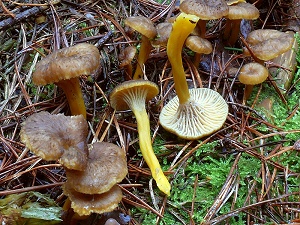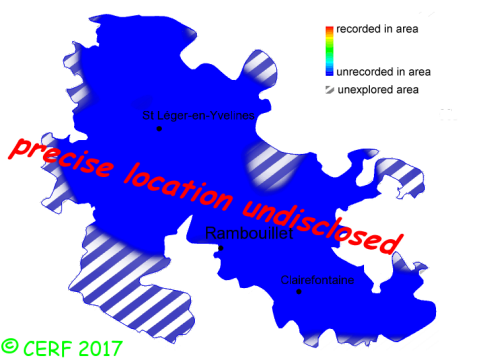| Craterellus tubaeformis (Bull.:Fr.) Quél. |
|
|
|
|
|
|
The cap is red brown to yellow brownish, convex at first, then soon lobed and horn-shaped or funnel-shaped, with a hole at its centre communicating with the stem; its margin is wavy, irregular and slightly inrolled. The cap surface is smooth to slightly rough, not viscid nor sticky. The stem is yellow to grey-yellow, groovy and slightly flattened, hollow, without ring. The flesh is yellowish white, unchanging; its taste is mild; the odour is faint, of mould or iodine; its texture is fibrous. The gills are yellow then grey, decurrent, but these are not gills, but forked ridges or veins, distant . The spore print is white. This species is mycorrhizal. It grows on the ground, more frequently in wet coniferous woods, sometimes under broad-leaved trees, on a rather acid soil, with spruce, pine, beech, oak. The fruiting period takes place from July to December.
Chemical tests : none. Distinctive features : brown cap, funnel-shaped, often with a hole in its centre joining stem; fertile surface under cap composed of well formed folds and not gills, forked, sometimes connected, yellow to tin grey; yellowish stem; in damp and acid woods, more often with conifers Craterellus tubaeformis is occasional and widely present in the forest of Rambouillet, and is occasional, more generally speaking . | ||
|
page updated on 14/01/18

